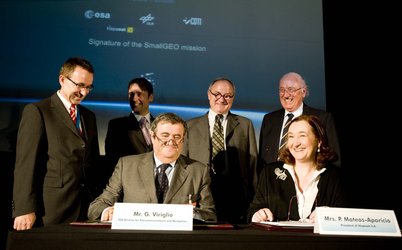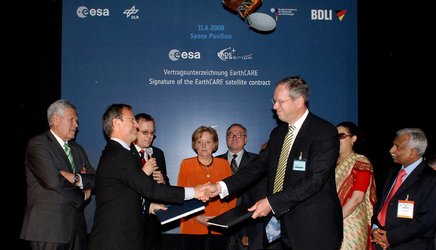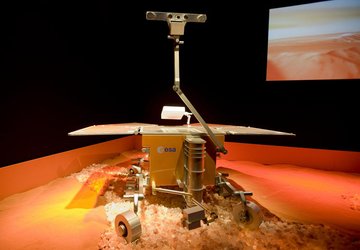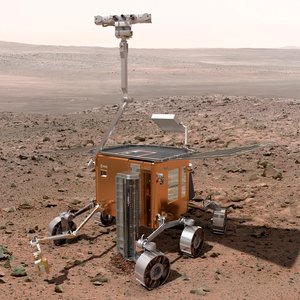Human space exploration in the future
To land on the Moon and on Mars, scientists need a mix of human and robotic missions to know in advance what challenges must be met. A video report from the Berlin International Airshow's Space Pavilion on the future of human exploration in space.
In February 2008, the Agency's long-awaited Columbus science lab was successfully delivered to the International Space Station, and on 3 April, the first Automated Transfer Vehicle - the Jules Verne - made a spectacular automated docking to the Russian ISS module, establishing ESA as a full partner in ISS operations.
To land, first, on the Moon and, later, on Mars - in the 2030 timeframe - scientists need a mix of human and robotic missions to know in advance what challenges must be met - to know how humans can survive for years under microgravity, to scout landing zones and to develop precise navigation and artificial intelligence techniques.
What is the overall concept of a human mission to Mars? And what is the right mix of human/robotic missions and international partners for future missions to the Moon and Mars?








